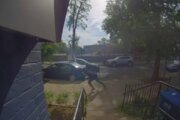WASHINGTON — There’s a new way to deal with tooth decay that doesn’t involve using drills and it can reduce the need for fillings by 30 to 50 percent, new research shows.
Dentists now tend to rely on the drill and fill method to deal with tooth decay. A seven-year study at The University of Sydney shows a specific plan of preventative care can stop and even reverse early tooth decay, researchers say.
“It’s unnecessary for patients to have fillings because they’re not required in many cases of dental decay,” the study’s lead author, Associate Professor Wendell Evans of the University of Sydney said in a news release.
Fifty years of research shows decay isn’t always progressive and develops more slowly than was previously believed.
“It takes an average of four to eight years for decay to progress from the tooth’s outer layer (enamel) to the inner layer (dentine),” Evans said.
The “no-drill” Caries Management System (CMS) plan developed by Evans and his team involves four parts:
- A highly concentrated fluoride varnish is applied to site of early decay.
- Patient is taught best tooth brushing practices.
- Patient restricts between-meal snacks and drinks with added sugar.
- Decay monitoring occurs relative to potential risk.
You might notice a great portion of this plan involves patients following instructions.
“The reduced decay risk and reduced need for fillings was understandably welcomed by patients,” Evans said in the release. “However, patients play an important role in their treatment. This treatment will need a partnership between dentists and patients to be most successful.”








